You came here to answer one thing: am I likely to get glaucoma? Fair question. Glaucoma steals sight quietly, and by the time you notice, damage is baked in. The good news: most of the risk comes from a handful of clear patterns-age, family background, eye pressure, and certain meds. This guide gives you the short list, helps you judge your own risk today, and tells you exactly when to book an eye test and which tests matter.
- Big risks: getting older (especially 40+), a parent or sibling with glaucoma, African or Caribbean heritage (open-angle), and East or Southeast Asian heritage (angle-closure).
- Medical flags: raised eye pressure, thin corneas, high myopia (short-sighted), narrow angles, diabetes, long-term steroid use, or past eye injury.
- Action now: if you’re 40+, get a baseline eye exam and repeat every 1-2 years; go yearly if you’re high risk.
- UK perk: in England, NHS sight tests are free if you’re 60+, have glaucoma, are 40+ with a first-degree relative affected, or have been told you’re at risk. Scotland provides free eye exams for all residents.
- Tests that matter: eye pressure (tonometry), optic nerve imaging (OCT), visual field testing, corneal thickness (pachymetry), and angle check (gonioscopy).
What actually raises your risk (and by how much)
Here’s the straight answer backed by the strongest evidence from the American Academy of Ophthalmology (Preferred Practice Pattern), NICE guideline NG81 on glaucoma (UK), the Ocular Hypertension Treatment Study, and The Royal College of Ophthalmologists. When people talk about glaucoma risk factors, they mean the mix below.
Age: risk climbs with each decade after 40. By 75, about 1 in 10 people in the UK have glaucoma or suspected glaucoma. The World Health Organization flags glaucoma as a leading cause of irreversible blindness worldwide, with cases rising as populations age.
Family history: a first-degree relative (parent, brother, sister, or child) roughly triples your odds for primary open-angle glaucoma. If a close relative was diagnosed early (before 50), consider yourself in a higher bracket.
Ethnicity and ancestry:
- African or Caribbean heritage: higher and earlier risk of primary open-angle glaucoma, and it can be more aggressive. Eye exams should start earlier and be more frequent.
- East and Southeast Asian heritage (including Chinese): higher risk of angle-closure glaucoma due to naturally narrower angles.
- South Asian heritage: risk sits between White and East Asian groups; watch both open-angle and angle-closure, especially with advancing age.
Eye pressure (IOP): higher pressure is the strongest modifiable risk. The Ocular Hypertension Treatment Study showed that people with raised pressure and thin corneas had the highest chance of developing glaucoma, and that lowering pressure cut that risk substantially.
Corneal thickness (CCT): thinner corneas (often defined around 555 microns or less) mean higher risk and make pressure readings look lower than they truly are. This is one reason pachymetry matters.
Refractive status:
- High myopia (strong short-sightedness, often −6.00 D or worse): linked with higher open-angle risk and can make optic nerve assessment trickier.
- Hyperopia (long-sightedness): more likely to have narrow angles, which raises angle-closure risk.
Eye anatomy and conditions:
- Narrow or occludable angles (your optometrist can tell you): risk of sudden angle closure.
- Pseudoexfoliation syndrome and pigment dispersion: both raise open-angle risk.
- Past eye injury (blunt trauma) or certain surgeries: can trigger secondary glaucoma months or years later.
Medical conditions:
- Diabetes: mild to moderate increase in open-angle risk; AAO and NICE flag it as relevant even if the link isn’t as strong as age or family history.
- Obstructive sleep apnoea: associated with glaucoma in several cohort studies; consider more frequent checks if you have OSA.
- Vascular dysregulation (e.g., migraine, Raynaud-type symptoms): possible increased vulnerability of the optic nerve.
- Low nocturnal blood pressure dips (often from aggressive BP treatment at night): linked in studies with progression-don’t change meds on your own, just discuss timing with your GP.
Medications and substances:
- Corticosteroids (tablets, inhalers, skin creams, joint injections, and especially eye drops): can raise eye pressure; the risk rises with dose and duration, plus personal steroid responsiveness.
- Topiramate (for migraines or seizures): rare but notable risk of secondary angle closure, especially early in treatment.
- Anticholinergics and adrenergic agents (some decongestants, motion-sickness meds, urinary spasm drugs) can precipitate angle closure if your angles are narrow.
- Chronic cannabis: not a treatment. Any pressure drop is short-lived and comes with side effects; AAO advises against using it for glaucoma.
What doesn’t seem to drive risk in a big way? Long hours on screens, reading, or wearing contact lenses. Those don’t cause glaucoma.
| Risk factor | Type of glaucoma most linked | Why it matters | What to do |
|---|---|---|---|
| Age 40+ | Open-angle, angle-closure | Risk rises each decade; damage is silent early | Eye exam every 1-2 years; yearly if 60+ |
| First-degree relative with glaucoma | Open-angle | ~3x higher odds | Start exams by 40; yearly or as advised |
| African/Caribbean heritage | Open-angle | Higher and earlier risk, more aggressive course | Yearly exams from 40 (earlier if advised) |
| East/Southeast Asian heritage | Angle-closure | Naturally narrower angles | Angle check (gonioscopy); counsel on symptoms |
| Raised eye pressure (IOP) | Open-angle | Major modifiable risk | Pressure-lowering treatment reduces risk (OHTS) |
| Thin corneas (CCT) | Open-angle | Masks high IOP and raises risk | Get pachymetry; adjust follow-up frequency |
| High myopia (≥ −6.00 D) | Open-angle | Structural optic nerve changes | Regular OCT and visual fields |
| Hyperopia + narrow angles | Angle-closure | Higher closure risk, especially older adults | Gonioscopy; consider prophylactic laser if advised |
| Long-term steroids | Open-angle (secondary) | Can raise IOP; some are “steroid responders” | Review meds; monitor IOP regularly |
| Topiramate | Angle-closure (secondary) | Rare but acute angle closure early on | Urgent care if symptoms; discuss alternatives |
Judge your risk in five minutes (step-by-step)
Use this quick self-check. It’s not a diagnosis. It’s a prompt to book the right exam at the right time.
- Age and ancestry check
Are you 40 or older? If yes, you’re in the age band where screening matters. If you have African/Caribbean heritage, start exams by 40. If you have East or Southeast Asian heritage, ask specifically for an angle assessment. - Family history check
Any parent, brother, sister, or child with glaucoma? That puts you in a higher bracket. If they were diagnosed young, push your first proper exam earlier. - Eye background
Do you have strong glasses (very short- or long-sighted)? Ever told you have high pressure, thin corneas, narrow angles, pigment dispersion, or pseudoexfoliation? Have you had an eye injury? If yes to any, get an exam at least yearly. - Medical and meds check
Diabetes? Sleep apnoea? Heavy night-time blood pressure drops? On steroids (inhalers, tablets, creams, injections) for more than a few weeks? On topiramate? These need closer monitoring. - Symptom check (don’t rely on this)
Open-angle glaucoma usually has no early symptoms. Angle-closure can be dramatic: sudden eye pain, headache, blurry vision, haloes around lights, nausea. That’s A&E territory-go now.
| Risk tier | Who fits | Suggested exam interval | UK NHS eye test eligibility |
|---|---|---|---|
| Low | Under 40, no family history, no high-risk ancestry, no eye/medical flags | Every 2 years | Paid unless in Scotland (free); Wales/NI vary |
| Moderate | 40-59 with no major risk; or strong myopia; or diabetes | Every 1-2 years | Free if diabetic or advised by ophthalmologist |
| High | 40+ with a first-degree relative; African/Caribbean heritage 40+; thin cornea; raised IOP; narrow angles; long-term steroids | Every 12 months or as advised | In England: free if 40+ with affected relative, or if advised |
| Very high | Diagnosed glaucoma; ocular hypertension with other risks; post-eye trauma | As per clinic plan (often 3-12 months) | Free NHS hospital/clinic follow-up as arranged |
Note: The UK National Screening Committee doesn’t run a population glaucoma screening programme (accuracy would be too variable), so regular eye exams are the route. NICE NG81 and The Royal College of Ophthalmologists recommend targeted testing with tonometry, optic nerve assessment, OCT and visual fields, pachymetry, and gonioscopy where indicated.
What to expect at the eye exam (and which tests matter)
Good care follows a simple pattern: measure pressure, look at the optic nerve, map your visual field, and understand your anatomy.
- Tonometry: measures eye pressure. It’s one piece of the puzzle, not the whole story.
- Optic nerve assessment: your optometrist or ophthalmologist looks at the nerve head for thinning or notching.
- OCT (optical coherence tomography): scans the nerve fibre layers and ganglion cells for early loss before you notice vision changes.
- Visual fields (perimetry): checks for the classic blind spots that creep in from the side.
- Pachymetry: measures corneal thickness to help interpret pressure readings and risk.
- Gonioscopy or anterior segment imaging: checks if your angles are open or narrow. Crucial if you’re East/Southeast Asian, hyperopic, or have symptoms suggestive of angle issues.
How often to test?
- Low to moderate risk: every 1-2 years after 40, sooner if your optometrist advises.
- High risk or on steroids: yearly at minimum; sometimes every 6-12 months.
- Known ocular hypertension or early glaucoma: follow the plan from your clinic; pressure targets are individual.
UK specifics in 2025:
- England: NHS sight tests are free if you’re 60+, have glaucoma, are 40+ with a close relative with glaucoma, have diabetes, or have been advised by an ophthalmologist. Otherwise, it’s a private fee at the optician.
- Scotland: eye examinations are free for all residents at set intervals; frequency increases if risk is higher.
- Wales and Northern Ireland: enhanced eye care schemes exist; many high-risk patients qualify for NHS-funded exams-ask your local optician.
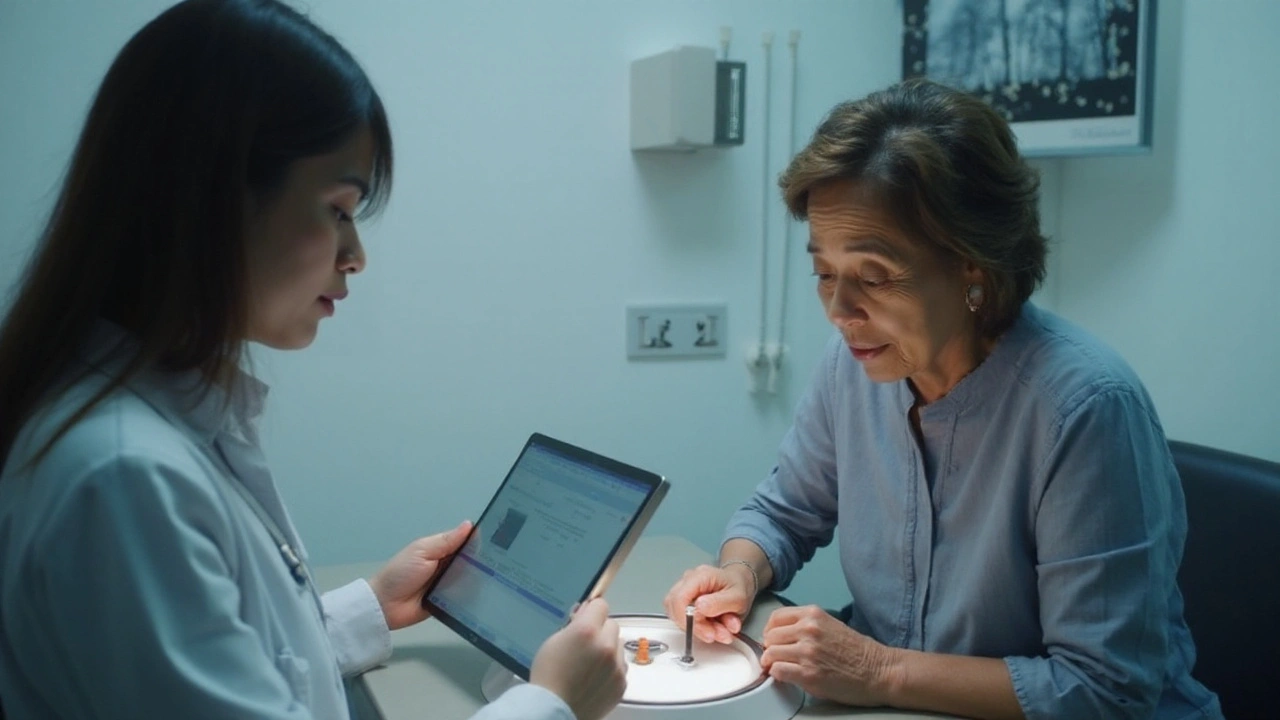
What you can change (and what you can’t)
You can’t change your age, ancestry, or family history. You can reduce avoidable risks and catch problems early.
- Review steroids: if you’re on long-term steroids (inhaled for asthma, creams for eczema, joint injections, eye drops), ask your GP or specialist if the dose can be minimised and arrange regular eye pressure checks.
- Know your angles: if you’re told you have narrow angles, learn the red-flag symptoms of angle closure and ask whether preventive laser (iridotomy) makes sense for you.
- Exercise: regular aerobic activity is linked with slightly lower eye pressure and better vascular health. Aim for brisk walking most days unless told otherwise by your doctor.
- Blood pressure timing: if you feel woozy at night and have progressive glaucoma despite good daytime pressure, speak to your GP. Night-time dosing might be worth reviewing.
- Sleep apnoea: if you snore, wake unrefreshed, or stop breathing at night (a partner often spots this), get assessed. Treating OSA helps general health and may help your eyes.
- Caffeine and hydration: very large caffeine hits can bump pressure transiently. Spread your coffee out and avoid big fluid chugs in one go if you have known glaucoma.
- Cannabis: not a treatment path. Effects are short, and the downsides outweigh the brief pressure dip according to AAO.
Red flags that need urgent care now (same day): sudden severe eye pain, headache, blurred vision, haloes around lights, nausea or vomiting, or a red hard eye with worsening vision. That’s angle-closure territory-go to urgent eye care or A&E.
Real-world scenarios and action plans
Scenario 1: You’re 28, very short-sighted (−7.00 D), no family history. Your move: book a full eye exam every 1-2 years and make sure the optometrist does OCT and visual fields at least periodically. Flag your myopia as a risk.
Scenario 2: You’re 52, of Black Caribbean heritage, and your mother has glaucoma. Your move: go yearly. You qualify for an NHS sight test in England given family history at 40+, and you should have OCT, visual fields, pachymetry, and a careful optic nerve check. If pressure is borderline, don’t wait-consider referral to a glaucoma clinic.
Scenario 3: You’re 67, White British, told you have thin corneas and “pressure a bit high.” Your move: you’re high risk. Expect regular OCT and visual fields and probably a pressure target set by a clinic. Treatment to lower pressure (drops, laser) reduces the chance of damage.
Scenario 4: You’re 45 with moderate eczema using potent steroid creams most days, plus a steroid inhaler for asthma. Your move: keep the steroids you need, but schedule eye pressure checks every 6-12 months. Ask if you can pulse or step down the steroid strength without flares.
Scenario 5: You’re 35, started topiramate two weeks ago for migraines, and now have blurred vision and haloes. Your move: urgent eye care today. This can be a drug-induced angle closure. Don’t wait for it to pass.
Scenario 6: You’re 74 with type 2 diabetes, no eye symptoms. Your move: you’re eligible for NHS sight tests and diabetic eye screening, but remember, diabetic screening photos aren’t glaucoma tests. Keep separate glaucoma checks yearly.
FAQ
Is glaucoma preventable? You can’t change your baseline risk, but you can lower pressure if it’s high and catch damage before it affects daily life. That’s what exams are for.
Can I tell at home if I’m getting glaucoma? Not reliably. Open-angle glaucoma is silent early. Home tonometers and phone apps aren’t a replacement for OCT, fields, and a trained look at the nerve.
Do blue-light glasses help? No effect on glaucoma risk.
Does LASIK cause glaucoma? LASIK doesn’t cause glaucoma, but it thins the cornea flap, which can make pressure readings look lower. If you’ve had LASIK, tell your optometrist so they interpret IOP correctly.
Do blood pressure tablets worsen glaucoma? Not directly. Very low night-time blood pressure can be an issue in some patients. Don’t change doses yourself-discuss timing with your GP.
Are children at risk? Childhood glaucoma exists but is rare. If there’s a strong family history of early-onset disease, paediatric referral is appropriate.
How strong is the diabetes link? Modest compared to age, family history, and pressure, but enough that guidelines list it as a risk. Keep up both diabetic screening and glaucoma checks.
What about migraine? It’s a possible vascular risk signal, especially with cold hands/feet patterns, but it’s not a primary driver like high pressure.
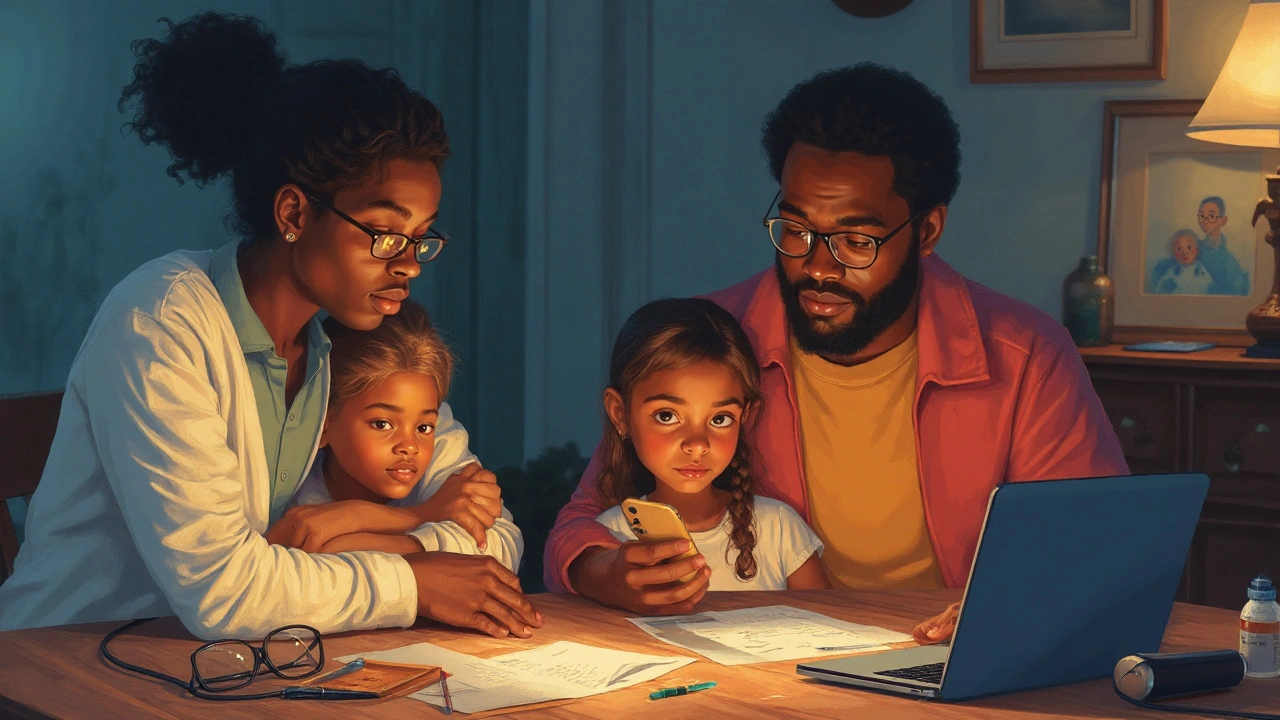
Next steps
- If you’re 40-59 with no clear risk: book a comprehensive eye exam every 1-2 years. Ask for pressure measurement, optic nerve assessment, and, if available, OCT.
- If you’re 60+: plan yearly exams. In England, you’re eligible for an NHS sight test.
- If you have a first-degree relative with glaucoma or you’re of African/Caribbean heritage: go yearly from age 40, sooner if advised.
- If you have East or Southeast Asian heritage or you’re long-sighted: ask specifically for an angle assessment (gonioscopy). Learn angle-closure red flags.
- If you’re on long-term steroids or topiramate: tell your optometrist and arrange regular pressure checks. Seek urgent care for sudden pain, blurred vision, or haloes.
- If you’ve been told you have raised pressure or thin corneas: stick to follow-up plans; lowering pressure reduces risk of vision loss.
Sources behind the guidance: AAO Preferred Practice Pattern for Primary Open-Angle Glaucoma; NICE NG81: Glaucoma: diagnosis and management; The Royal College of Ophthalmologists clinical statements; Ocular Hypertension Treatment Study and the European Glaucoma Prevention Study; UK National Screening Committee statements on glaucoma; WHO World Report on Vision. These bodies align on who’s at risk and the tests that matter.

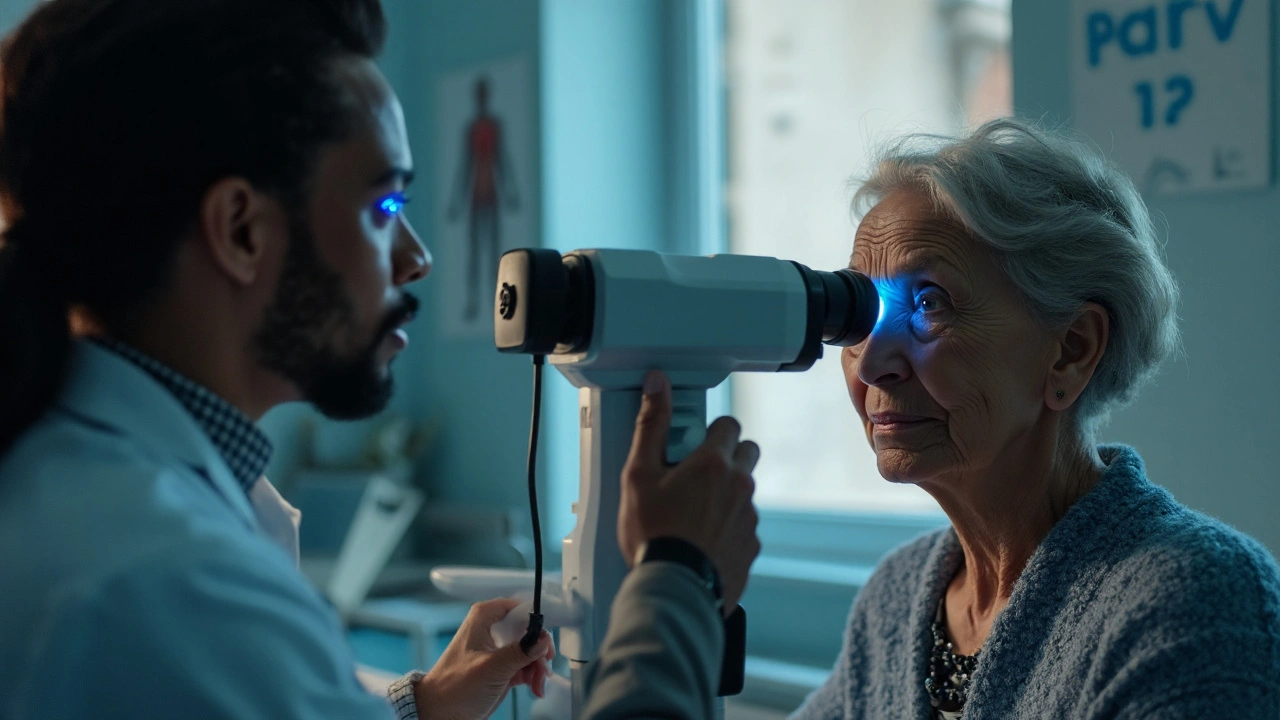


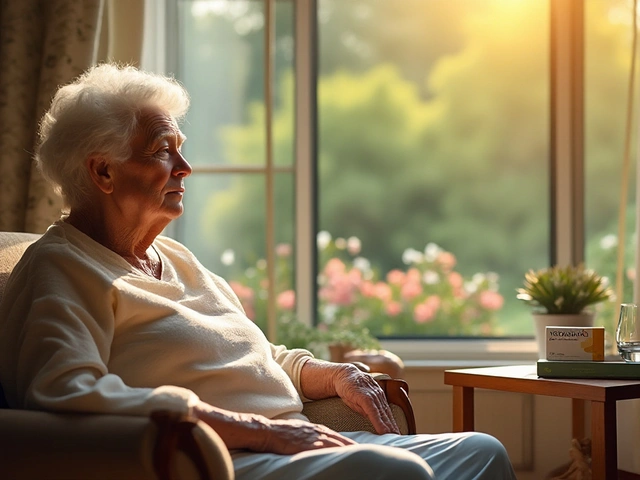
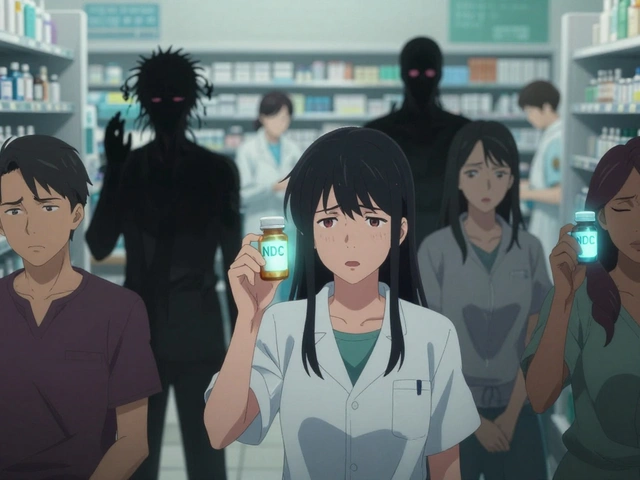
Reviews
Glaucoma? Nah I just squint harder and call it vision training. My grandpa had it and he still drove his pickup at 87. You don't need all these fancy tests just get a pair of sunglasses and stop complaining about your eyes
Oh wow another medical infodump from someone who clearly didn't get enough sleep and now thinks they're a doctor. You know what reduces glaucoma risk? Not being a hypochondriac who Google's every blink. I've had 'high pressure' for 12 years and still see just fine. Your OCT scans are just expensive paperweights
It's fascinating how we've turned medical prevention into a performance of vigilance. We measure corneas like they're sacred geometry, track IOP like it's stock market data, and still ignore the real truth-that our bodies are not machines to be optimized but ecosystems to be respected. The fear of glaucoma is less about vision loss and more about our collective terror of aging without control. We want a checklist, a metric, a guarantee-but biology doesn't work that way. The eye doesn't care about your NHS eligibility or your myopia score. It only cares if you're alive, breathing, and still willing to see the world as it is, not as your algorithms predict it should be
My mom’s from Kerala and had angle-closure glaucoma at 58. She never complained until she couldn’t read her prayer book anymore. The gonioscopy saved her sight-no drama, just a quiet 10-minute exam. If you’re from South Asia and over 40, don’t wait for symptoms. Just go. No guilt, no fear-just a simple act of care. Your eyes will thank you later
I appreciate how thorough this is. As someone who grew up in a family where eye health was never discussed, I didn’t know about the link between steroid creams and IOP until now. I’ve been using a potent topical for eczema for years. I’ll book an appointment this week. Thank you for writing this with clarity and without fear-mongering. It’s rare to see medical advice that feels like a conversation, not a lecture
Look, let’s cut through the Western medical theater. In India, we’ve been managing glaucoma for centuries without OCT machines or pachymetry. Our elders used herbal compresses, yoga breathing, and avoided sugar. You think your 555-micron cornea is some scientific revelation? In rural Punjab, they diagnose by the way the light hits the pupil at dawn. Your ‘NICE guidelines’ are just colonial data dressed in fancy fonts. You measure everything except the soul’s clarity. The real risk isn’t pressure-it’s forgetting that vision is more than retinal cells. It’s the mind’s willingness to perceive. And no algorithm can measure that. So while you schedule your yearly scans, ask yourself: are you seeing the world, or just your own diagnostic checklist?
Thank you so much for this incredibly clear, well-researched, and compassionate guide. I’m 43, have -6.50 vision, and just found out my dad had glaucoma-he never told me. I’ve been putting off an eye exam because I was scared. Now I’m booking one for next Tuesday. I’m going to ask for OCT, visual fields, and pachymetry. I’ll also mention my steroid inhaler. You made it feel manageable, not scary. Seriously, this is the kind of content that saves sight-and peace of mind. Thank you for taking the time to write it so thoughtfully
Wow, someone actually wrote a responsible article about glaucoma? Who let the fact-checkers out of their cage? I’m shocked. I thought this was going to be another clickbait ‘you’re all going blind’ panic post. But no-this is actually useful. I’m 51, white, diabetic, and on inhaled steroids. I’ve had ‘borderline pressure’ for years. I thought it was nothing. Now I’m going to ask my optometrist about OCT. And yes, I’m going to stop blaming my blurry vision on ‘too much Zoom.’ This is the kind of post that makes me believe the internet still has some good people left